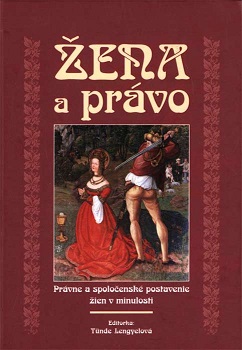Podoby ženy v neskorostredovekej spoločnosti (na príklade štyroch šľachtičien z územia Nitrianskej župy)
Four Women Portraits of the Late Medieval Society
Author(s): Ján Lukačka
Subject(s): Gender Studies, Middle Ages, Health and medicine and law
Published by: SAV - Slovenská akadémia vied - Historický ústav SAV
Keywords: Slovakia; women; looks; middle ages; Nitra County; nurses;
Summary/Abstract: In the late Middle Ages, on the territory of the Nitra County there lived several prominent aristocratic families, but also a high number of middle and low nobility members, whose living standard resembled that of burghers and richer peasants. The public administration was in hands of nobility who thanks to their privileged position lived relatively well off. It must be stressed that in this period women were entirely excluded from the public sphere. However, this does mean that they had no influence on the life of society. On the basis of preserved sources we can reconstruct lives and activities of four noble women, each of them in a different, special way. Klára from Hlohovec, the wife of Mikulás Kont, like majority of women in those times married very young. She and her husband founded the hospital of Holy Ghost in Hlohovec. After the death of her husband, she decided not to marry again and over 30 years lived on estates her husband bequeathed to her. Being a patroness of the hospital, she left considerable means for the hospital in her will. It was also with the help of her generosity that the hospital has managed to survive to the present. Quite a different personality was Marta, the wife of Mikulás Forgác. When her husband fell in the war against the Ottomans, she took over the administration of the estates standing in for her young sons. She had to resist attacks of relatives who wanted to take the property from her. She addressed the ruler, King Sigismund, who issued a protective letter for her. Marta was a strict master with over-reaching demands on her subjects. In addition, she neglected the education of her six sons. In the end, the sons revolted against their mother, because she had refused to trans¬fer the estates to them after they had come of age. Once more, the king had to intervene and ordered Marta to meet the demands of her sons. Despite their previous disagreement, the sons did not turn their back to their mother and took care of her. Anna, the daughter of Ladislav from Kalna nad Hronom married Martin Czobor. After short time, husband's death terminated the marriage. The Czobor family generously left dots I property to the young widow. The family chose Martin Majteny as her second husband and despite the fact that the choice was probably determined by the size of his estates, the marriage did not lack mutual affection. Anna however, fell ill and died. Her brother used the opportunity and demanded her dowry and dotal property. There is a detailed list of her dowry in his request. The brother did not succeed, because in her last will she left all her property to her beloved husband. Anna Ludanicka, the last representative of the famous house, went down to history by means of a scandalous episode. In 1514, she ordered her subject to attack the Oponice castle that belonged to the Aponyi family. By doing so, she appropriated not only money, but also jewel, charters and expensive clothes. Nevertheless, it came to light who was the mastermind behind the burglary and after a long series of episodes, she was forced to return the stolen goods. However, in order to purge herself form the accusations she put the blame on her subjects. It is often generally remarked that women in the Middle Ages had only few rights. It seems that reality was far more complex. The basic legal frame that limited the position of women was Hungarian custom law that was created by men and mostly in favour of men. Mentions of women in the medieval sources are rare and therefore women remain somewhere in the background. This traditional depiction of the position of women is the result of the distorted picture of abovementioned medieval sources that visibly favoured men as those in power. It is only occasionally that these scant sources reveal or hint at the fact that behind the decisions of men stood their mothers or wives.
Book: Žena a právo. Právne a spoločenské postavenie žien v minulosti
- Page Range: 46-54
- Page Count: 9
- Publication Year: 2004
- Language: Slovak
- Content File-PDF

